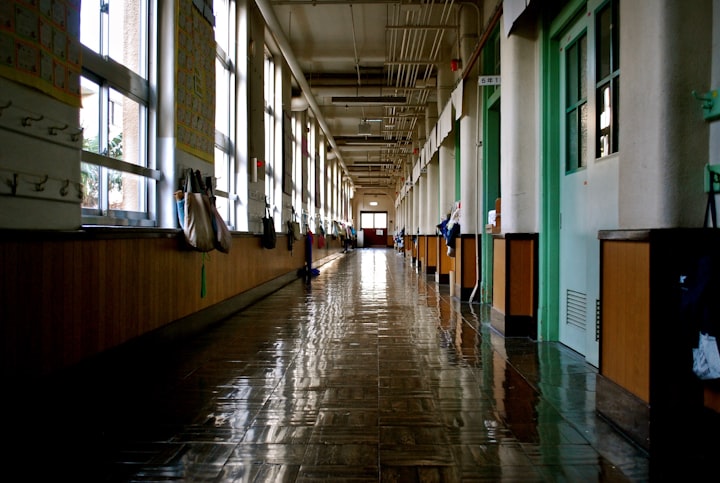A recent briefing from the Edmond J. Safra Center for Ethics, New America, and Brown University School of Public Health, draws attention from a growing body of evidence to recommend that K-12 schools should remain open in a pandemic, even under high infection rates.
Updated from recommendations put forward in July, a report from a group of public health and education experts, including Harvard Graduate School of Education Professors Danielle Allen and Meira Levinson, suggests that rather than local infection rates, it is the capacity of a school or district to maintain infection control protocols. which is the best guide for determining the safety of an opening for hands-on learning.
These protocols include:
-Everyone wears a mask including when talking.
-Practice proper hand and bathroom hygiene
-Open air windows four to six times per hour through any combination of ventilation and filtration
-Following the guidelines for social distancing at 3 feet for young learners and 6 feet for middle school students when community is spread over 100 / 100,000
- Implemented a strict quarantine policy.
-Test for infection whenever possible
"It is time for a transition from crisis management to the organizational and cultural changes necessary for pandemic resilience," the report wrote.
The report emphasizes that in order for schools to be able to safely provide important functions directly, leaders need to prioritize the safety of students, staff, and educators.
This can be done by:
Support a new culture that implements preventive measures such as wearing masks, washing hands and maintaining social distancing through training, education and ongoing communication with parents and families.
Work to ensure everyone adheres to rules for masking, small social circles, social distancing, and staying home when sick and not attending school, or being in buildings.
Set up infection control teams in all schools to prevent risks, ensure protocols are compatible with developmentally appropriate learning, and work closely with public health agencies to bring and coherence to reopen opening plans.
Maintain a "situation room" at the district, district, and / or state level staffed by personnel from the Ministry of Education, Public Health, and the Corps of Contact Tracing ready to respond promptly in the event of an outbreak.
Work with employees and unions to tailor academic programs as needed, analyze, plan, and implement responses to distance and face-to-face learning, including support for employees.
Develop partnerships to provide resources and support such as mental health care, workforce training, and community testing.
Different schools in different contexts need to adopt different strategies for pandemic resilience and need to make different decisions about how to balance the trade-offs between direct and distance learning.
However most agree that, where possible, face-to-face learning is a better option than distance learning (online).
To facilitate in-building safety for face-to-face learning, even in contexts with significant community deployment, schools (and the city, state, and federal agencies that support them) need to address six main topics in setting their strategies, trust, transport, infection control. ; occupational health and safety standards; testing; and vaccines.
In general, only trust and infection control can have a significant impact on other actors independently by the schools themselves. They can make significant progress on this dimension especially when school leaders, educators, and families can work together effectively. In contrast, transportation, occupational health and safety standards, testing, and vaccines are areas where schools need assistance from city, state, and federal governments. That said, in our highly politicized environment, even belief often hinges on factors beyond the reach of the school itself.
first reviewed all six topics but then devoted the remainder of the briefing on infection control, which were rarely discussed in a specific school context and which were the lowest elements under school control.
Trust, including labor management and community relations One of the biggest barriers to face-to-face learning today are the challenges schools face in managing classroom staff. Educators, including teachers and paraprofessionals, and staff must feel safe at work as well as on the way to and from work, so that hands-on learning can continue.
Trust is not just a matter of the level of community spread. It is also a question of how school leaders make decisions, how well they incorporate educators, paraprofessionals, and other staff in the decision-making process, how well they communicate around decision-making, and how well their decisions include alignment. focus on health and safety for everyone, whether in the building, students, but also educators, professionals, and others.
Too much discussion of school reopening has focused almost exclusively on issues of risk to children. Their safety is very important, as is the safety of staff and educators, and their ability to have a voice in decision making.
Four challenges to trust
being clear about what we do and what we don't know about the safety of students, staff, and educators is critical to rebuilding trust because effective and productive workforce management and community partnerships for decision-making School districts must form diverse health and safety committees including representatives of all groups in the school community.
The second critical trust issue relates to the politicization of public health guidelines. Schools face an even greater challenge to safe reopening in a context where the community will not support the use of masks in schools or, more broadly, contact tracing and community mitigation strategies.
The third critical trust issue relates to families' trust in schools and districts to keep their children safe. The absence of such trust explains why today everyone still agrees to learn online. Often parents tend to distrust the security provided by schools, so they are unable to take advantage of potential opportunities for hands-on learning.
In New York City, for example, African-American student families are much less likely to send students back to study in person, for fear that students will carry the virus home to vulnerable family members. These trust issues are significant barriers to success in restoring immediate learning and require direct attention and involvement.
The fourth critical trust issue has to do with acceptance rates in a particular vaccination community. This will affect the speed of vaccination and the level of risk reduction in the community.
transportation.
For school reopening to be successful, not only must the school environment within the building be safe, but also the process for getting to the school must be safe. In urban environments, where educators, paraprofessionals and staff depend on public or online transportation to get to work, increasing levels of community dispersal are rapidly changing the level of risk they face in employment.
Depending on the context, districts and public officials may need to pay attention to safety in public transport. Districts and school principals, who work with unions and staff, also need to include school buses in their infection control protocols. The simple action and the driver wearing a mask make this risk lower.
Bus monitoring shows that 20--40 air changes per hour can be achieved while moving with windows open a few inches. At this rate of air change, the flow of air is less relevant because the air change will be fast. In addition, everyone must be in the closed room of the bus.
Infection control
Knowledge about the virus and about mitigation strategies for infection control has increased significantly since July. Based on 3 months of different school reopening across the country that have served as a national natural experiment, it is now clear that schools with face-to-face learning employing effective mitigation strategies are highly unlikely to spread and, crucially, create a favorable environment. secure.
Effective mitigation strategies can achieve secondary transmission rates that are lower than the primary transmission rate from surrounding communities. While still in the process of studying schools that have experienced outbreaks, it is now reasonable to expect that the situation reflects a breakdown in the infection control system.
The most important elements of important infection control are:
universal masking (including while speaking)
hand hygiene and bathroom
achieve 4--6 air changes per hour for 'clean' air via a combination of ventilation and filtration (or outdoor classrooms)
3 feet social distance for young learners at all levels of community spread
6 feet social distancing for secondary schools when the community spread rate rises above 100 / 100,000 new cases every day; Social distance 3 feet below that level
strong quarantine policies and contact tracing practices
and, where applicable, surveillance and screening tests are also discussed below in the "tests".
Occupational Health and Safety Standards
Importantly, Agency Occupational Safety and Health (OSHA) regulations do not apply to the majority of school employees working in public schools, and many states do not have comparable occupational safety laws for public sector workers.
It's time for the states to fill this gap. Schools need clear, adequate, and enforceable rules and protocols to protect students, education workers and their families wherever they live. While the development of these policies is essential in the long term, the process of developing them should not slow down best practice control measures for infection prevention.
Testing
Screening or surveillance checks can make infection control much easier and more effective and can restore confidence in the safety of the environment. This can help stabilize the infection control regime by giving public health officials and school leaders full visibility of the prevalence of Covid-19 in the school community and can help identify potential infection control failures more quickly.
Testing can generate confidence in the individual being tested, but also at the population level based on the knowledge that educators, paraprofessionals, staff, and other students are also being tested and are unlikely to be in school with COVID-19. Nonetheless, testing programs must operate with transparency in reporting results, or risk causing mistrust.
Surveillance testing for educators, paraprofessionals, and other staff is recommended to reduce the risk of asymptomatic transmission, once the community spread rate has exceeded 20 / 100,000 new cases each day.
A surveillance test for secondary school students is recommended once the community spread rate has exceeded 100 / 100,000 new cases each day. These recommendations are drawn from the work of the Duke-Margolis Health Policy Center (Risk Assessment and Testing Considerations to Reduce Sars-COV-2 Transmission at K-12 Schools.). Group testing, which is much cheaper, is now available and can be used effectively to improve infection control in schools.
Despite this, testing infrastructure varies widely across the country and from school to school, and disciplined application of infection control protocols can also serve to substantially reduce risk even in the absence of testing, and the absence of testing should not be a barrier for schools to develop control protocols. strong infection.
Vaccine
Each state is currently developing plans to prioritize vaccines. While health care workers, those in high-risk categories, and essential workers working in contexts of higher risk and transmission are often and appropriately prioritized for early access to vaccines, those working in schools should fall into the next category in the population who received a vaccine for covid-19 when it became available.
Pediatric vaccines tend to lag behind for this type of vaccine for the adult population. Consequently, infection control will continue to be needed in schools for the next 6-9 months. Although the US Department of Health and Human Services has not asked states to submit a testing plan after December 2020 and has shifted focus to submitting a vaccine plan, in reality, it will require both for most of 2021.
What do we know now about the transmission of COVID-19 in schools
To make an assessment of the level of risk involved in face-to-face learning in the context of community dispersal, we need to look at data across the globe, where schools have opened temporary schools, as well as data in the US All data are partial. Here is data that can currently tell us about outbreaks and transmission in schools, and the level of risk that affects the safety of students and adults in the building (educators, including paraprofessionals, and staff).
There is growing evidence that students are not at high risk from reopening schools (and as noted above, face-to-face schools bring many benefits to students and families). Various scientific papers have found that vulnerability and infectivity increase with age.
The CDC report on Covid infection in children in the US has found that between March and September 2020, children aged 12-17 had been diagnosed with Covid about twice as often as children aged 5-11 years, while the infection rate both groups had significantly lower rates than adults. The most comprehensive data tool currently available for understanding what's happening with schools and Covid in the United States is the National COVID-19 School Response Dashboard. It records data on more than 8 million students (out of 57 million nationally), of whom roughly half participate in face-to-face learning.
In the database, from September to November 2020, cases in schools largely reflect community trends: The cumulative percentage of face-to-face students who assumed or confirmed Covid positive was 1.2%, compared to a community case rate of 1.5% for the same cases. area over the same time period. Nonetheless, these figures capture a variety of different mitigation and testing methods across communities and schools and therefore only provide a preliminary impressionistic picture, which warrants further analysis.
-
The main question is about adult risk, which we will focus on in the remainder of this section. In that section, we know that
School reopening with strong controls has a limited impact on community transmission rates. In a globalized setting, school reopening accompanied by strong mitigation measures is not associated with a spike in infections in the school environment or the wider community.
The diverse education systems in the UK, Spain, Thailand, Vietnam, Japan and South Africa have been able to safely reopen in the last year. Where school openings have been a driver of transmission, there are usually no major mitigation measures in schools such as opening school ventilation and / or the absence of other mitigation strategies in the wider community. Additionally, secondary schools seem to be more of a driver than primary schools.
School-related clusters often appear to originate outside the school rather than as a result of in-building transmissions. It is not aware of any outbreaks in the US caused by transmission in schools where infection control has been implemented. A review of the literature (in the U.S. and internationally) through October concluded that where there have been outbreaks in schools, they have been associated with schools and communities with limited control measures and occur more frequently in secondary schools, rather than primary schools.
Data from a randomized trial study in the UK, where schools opened completely in September with little mitigation strategy, suggest that prevalence among primary-age students only begins to increase 3-4 weeks after school opens, suggesting that this age cohort is smaller. likely to be infected and contagious and only have an impact after community transmission has increased substantially.
The prevalence among middle school aged students shows a faster increase after re-opening and to a higher level. However, this lacks a mitigation strategy. After the national lockdown was implemented in November, schools remained open and within 2-3 weeks, the prevalence among school-age children decreased, despite being in school every day.
The WHO also recently confirmed that only a few major outbreaks have been linked to schools, most of which started in communities, and from adult personnel. The WHO further cites middle and high schools as the main point of the outbreak in schools, noting that children under 10 appear less likely to become infected.
The COVID-19 School Response Dashboard shows that school staff have a cumulative infection rate (August-November) of 1.9% vs. 1.5% for the community where the school is located. However, these figures cover wide variations between regions. In some districts, or three times higher than the level of community distribution. Even though the data as mentioned above only provides an initial picture, this figure is concerning and needs further investigation.
There are also data comparability issues that could explain the higher figure, for example the fact that 1.9% of staff cases are considered suspected cases while 1.5% of community cases are only confirmed cases. Additionally, the use of supervisory testing for teachers but not in the wider community may influence comparisons.
There are also important concerns about teachers who are at higher risk either at school because of a lack of infection control measures or outside of school because they have to depart from and from school. However, infection control measures do manage to reduce this risk, as shown by study by Walter S. Gilliam of the Yale Center for Child Studies: "In the context of considerable infection mitigation efforts in US pediatric care programs, exposure to child care for months the start of the US pandemic is not associated with an increased risk of COVID-19 transmission. "
Teachers face no greater risk than other, relatively low-risk frontline workers such as shop clerks or retail workers - and far less than meat packers and health care assistants, for example.
It would be useful if national public health authorities collect comparative data by workplace sector but do not currently have such data comprehensively. The UK has such data and it shows that the risk to teachers is on a par with retail and customer service workers and far below that of health care workers. The increased risk, compared to that faced by telecommuting workers, can and should be effectively reduced through infection control strategies.
U.S. national dashboard data includes schools that have achieved near-zero transmission rates in schools.
Accumulation is evidence that supports the view that schools, in general, are and can be very safe when they implement rigorous infection control protocols: millions of schools are open globally with no significant evidence of transmission in schools. The fact that some adults may face a high risk of becoming infected at school may indicate a lack of infection control measures rather than the opening of the school itself.
About the Creator
Viona Aminda
Not a fiction story telling







Comments
There are no comments for this story
Be the first to respond and start the conversation.